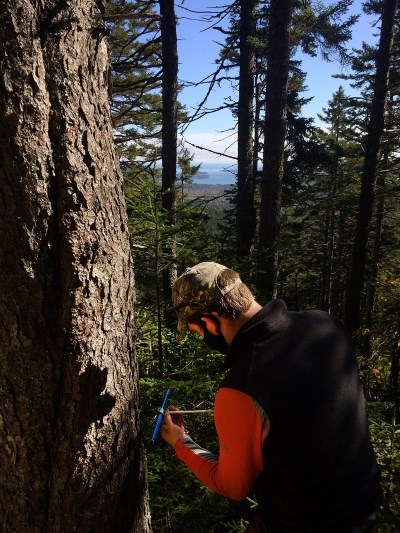Last updated: January 12, 2022
Article
Research Brief: Understanding Maine's Coastal Spruce-Fir Forests and their Sensitivity to Climate Change

C. Schmitt/Schoodic Institute
Most of Acadia National Park is covered with evergreen forests of red spruce and balsam fir, cold-adapted trees that are expected to lose extensive habitat in Maine as the climate continues to warm. The coast of Maine could also serve as a climate change refugium for spruce-fir forests due to the cool and moist summers, as has happened in the past. Like many other plants in Acadia, spruce and fir are at the southern edge of their range, and so despite the cooling influence of the coast, even small climatic changes could lead to rapid changes in the forest.
The majority of the spruce-fir forests in Acadia are growing back after being logged in the early twentieth century. And they are becoming older in a warming climate. Yet scientists and park managers know very little about older coastal spruce-fir forests, which are scarce in Maine, or how these forests change as they age, or how sensitive they are to climate shifts.
Wason and fellow researchers Camilla Seurup and Shawn Fraver are revisiting six forests in Acadia studied in the mid-twentieth century, surveying vegetation to see how the forests have changed as they’ve continued to age over the past sixty years as climate has changed. Wason will also quantify long-term changes in climate sensitivity of coastal spruce-fir forest trees using detailed tree-ring analyses. Annual growth rings, visible in cores taken from individual trees, can be correlated with climate variables such as drought.
The results will help park managers know if coastal spruce and fir have a future in Acadia and if that future looks like isolated pockets or large stands
